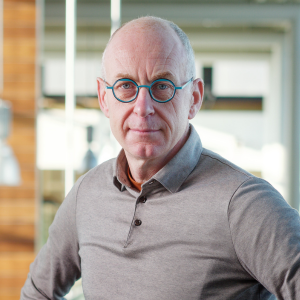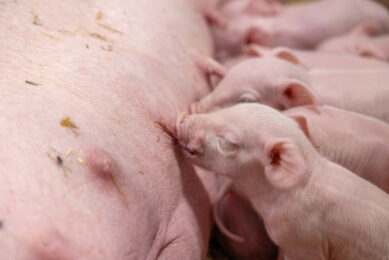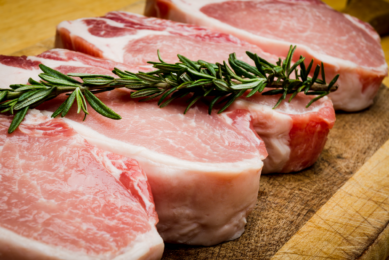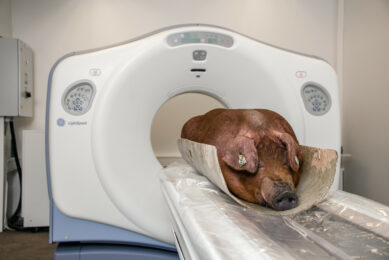Raf Beeren (Hendrix Genetics Swine): “Aiming for a top spot with pig genetics”
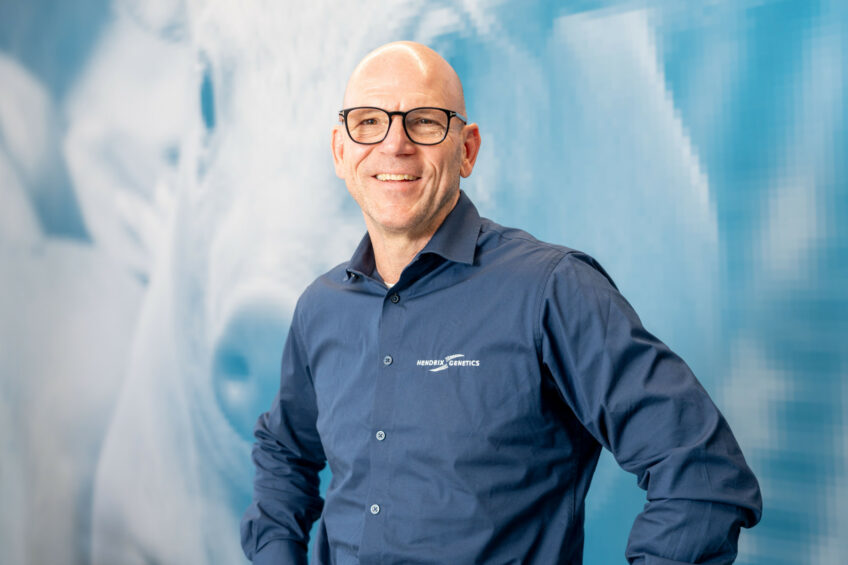
Pig breeding companies Hypor and Danish Genetics merged early 2025 and will continue under the name Hendrix Genetics Swine. In charge is Raf Beeren, who chooses to tread carefully when deciding where to go with the newly created company. Test results will guide the next steps.
Since early 2025, Raf Beeren has been in charge of the newly created pig division within Hendrix Genetics. Hendrix Genetics Swine, as it is called, is the result of the merging of Hypor and Danish Genetics – and the joint operation will continue to work on breeding and sales activities for pig genetics.
Pig producers should not be noticing anything of the merger. All existing F1 sows and terminal sires will continue to remain available. Both companies in the merger had Landrace and Yorkshire sows for the production of F1 animals. In addition, Hypor had 2 Duroc terminal sires, i.e. Magnus and Kanto; and one Piétrain terminal sire, called Maxter. Danish Genetics had one terminal sire: the Danish Duroc.
Ambitious management board
The new division’s management board is ambitious. Beeren says, “We aim to become number one or two worldwide in pig genetics within five years.” In 2024, 10% of Hendrix Genetics’ turnover came from the pig division. The merger should increase that percentage to 25%. With Danish Genetics on board, there is a strong third component underneath the breeding company Hendrix Genetics.
The head office of Hendrix Genetics Swine is located in Denmark. That will be the place where plans are made and for further integration of both groups, Beeren explains. The names Hypor and Danish Genetics will continue to exist as brands of the newly created company.
“Yes, basically we have already had those for four years. In 2020, Danish Genetics and Hypor agreed that we could use each other’s Landrace and Yorkshire genetics. That has resulted in an F1 sow, which will get its official market launch by the end of this year. She will also be given a name. A number of large pig farms in Spain, France and Germany are already working with this sow. They actually asked for it – they wanted the original Hypor sow for her good mothering qualities and uniform litters with a high birth weight, but also wanted one or two more piglets per litter. This crossbreed has all that. The sow is now also being bred at our partner farms in Denmark. We are busy collecting the technical results of the offspring of this sow and analyse those. Then we can support her potential with figures.
“What also matters for pig farms is the Hypor sow’s low mortality figures in both piglets and sows. On farms in North America, sow mortality is a big challenge and can sometimes exceed 15%. That number isn’t sustainable, it costs a lot of money and requires extra labour.”
 Isn’t every extra piglet a profit?
Isn’t every extra piglet a profit?“Certainly. The question is how much it costs to raise those extra piglets. If you do not have good management or are short on labour, those piglets will not survive. We have figures on labour requirements. All in all, it takes 1 hour of labour to wean 5 piglets from the Hypor Libra sow. On average the amount is 3.5 to four weaned piglets per hour of labour. We also see the difference in labour requirements at our nucleus farms.”
“Genetics are not going to work if the pig population is not healthy. That applies to both breeding farms as well as production farms. It becomes particularly notable in case of infections spreading through a farm. Think of Porcine Epidemic Diarrhoea (PED), which has been emerging in various countries. Per finished pig PED comes down to serious amounts of money being lost.
“Animal health is crucial for cost price, but also for the licence to produce. We breed for longevity, making sure a pig will survive in the environment where it has to breed and that it is less sensitive to external influences, such as pathogens. It is not feasible to breed for general disease resistance. That is why we aim for pigs with a broad resilience.
“Of course, we closely monitor what is happening in the field of genetic modification. We have our experience, but at the moment we do not do anything with it in pig breeding.”
“In that context we are mainly talking about feed, which is 65% of the CO2 footprint. Losses, read mortality in production, are also important. A lot has happened in terms of feed efficiency, and a lot can still be done. Forty years ago, the feed conversion was at 3.5, whereas nowadays it is at 2.3 to 2.4. Every year, feed conversion is reduced by 1-2%. Selection is still possible on feed conversion, so more genetic progress can be achieved. The best boars are at a feed conversion below 2.0.”
“We are monitoring the performance of offspring from our Duroc terminal sires at various commercial pig farms. That occurs both at farms having Libra sows and Danish Genetics sows. Testing is being done in Europe, America and Brazil. Depending on the test results, we will decide the breeding direction with Durocs. The Hypor Maxter-Piétrain will remain available in any case. There is demand for fast-growing, vital Piétrains. For Spain and Belgium, we have also retained the license to sell the db.77 terminal sire from BHZP (the German Federal Hybrid Breeding Programme, ed.), a German Piétrain.”
“Pig breeding used to be entirely focused on increasing production and improving margins for pig producers. More stakeholders have joined, such as animal welfare organisations. Increasingly, the focus in breeding has been shifting to the entire pork chain. That is why we have been working with group housing for sows on our nucleus farms for years. For a few years now, we have also stopped docking tails on our Canadian nucleus farms. Animals will drop out of the programme in case they cannot keep up in group housing or in case they struggle with long tails.
“Breeding for behaviour, however, is only possible to a limited extent. It will not lead to a real breakthrough in the field of entire tails. If the management on a pig farm is not top notch, then forget about keeping tails intact. Progress can be made in terms of behaviour, but it takes time. Just like with other characteristics with low heritability, such as litter size.”
“Not yet, but some breeding farms within the organisation do. We closely monitor how the sows are doing in the free farrowing pens. At our nucleus farms, we do monitor the farrowing process. We have recently started using cameras for that purpose. There is a lot of variation in farrowing time. A long birth process is negative for piglet survival. We strive to eliminate the extremes. In fact, all piglets should be born within five hours.”
“We have been receiving a lot of signs of appreciation. Customers as well as non-customers have approached us with questions or orders. That also counts for our new product line. As I have a sales background, something like that makes me happy. The market is upbeat about there being a third party in addition to the two market leaders.


